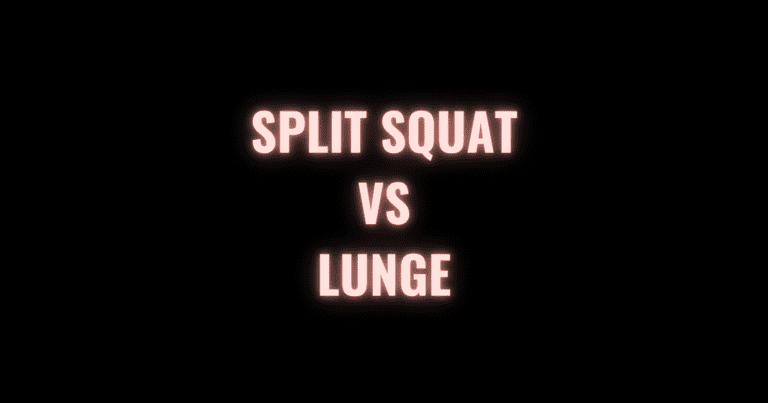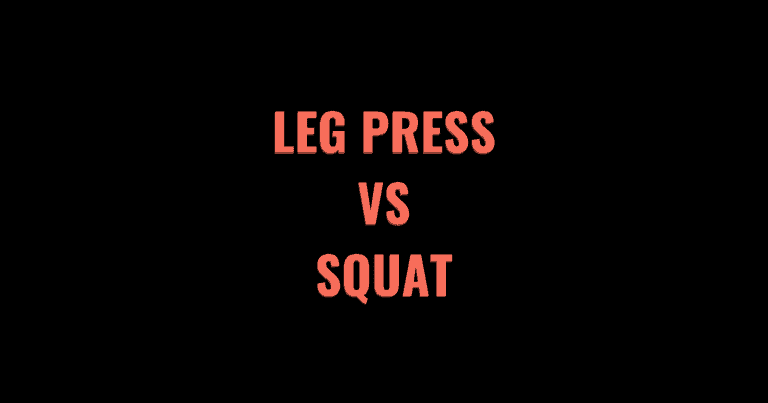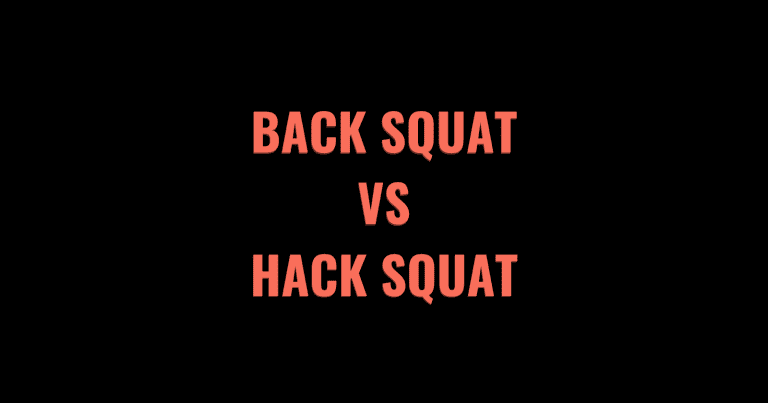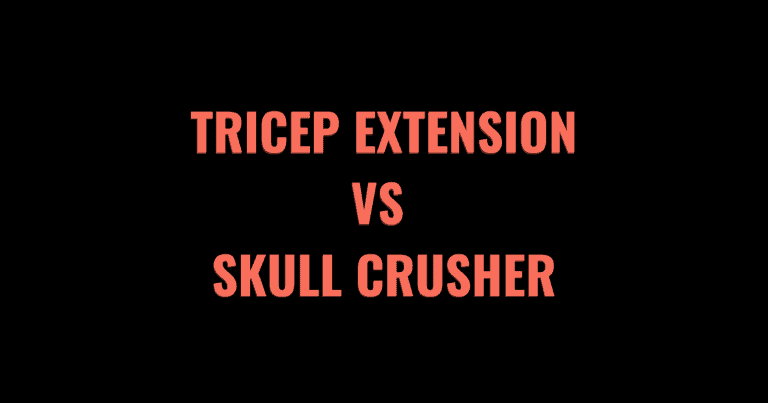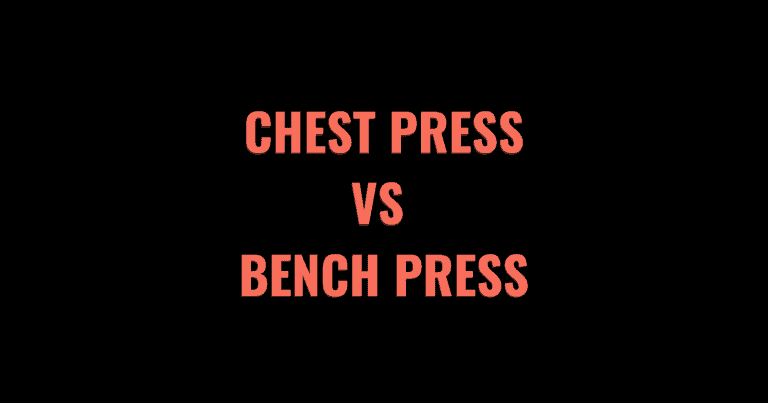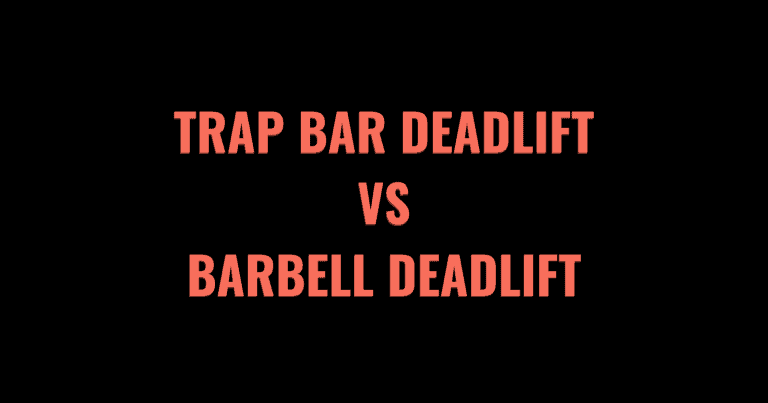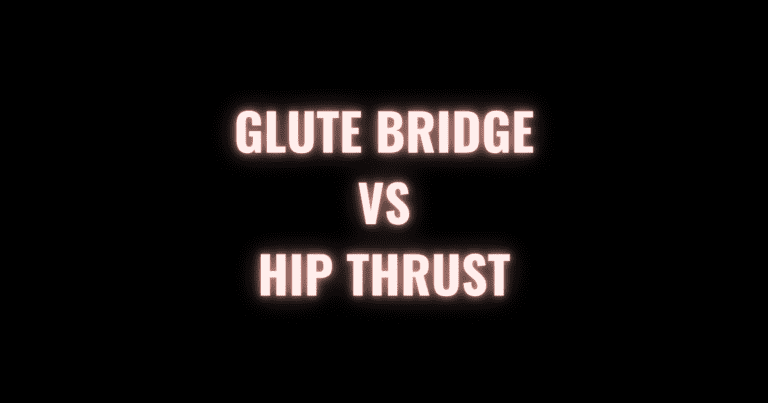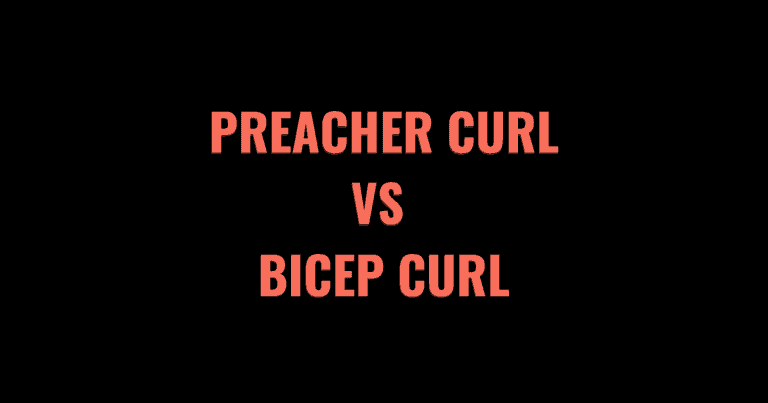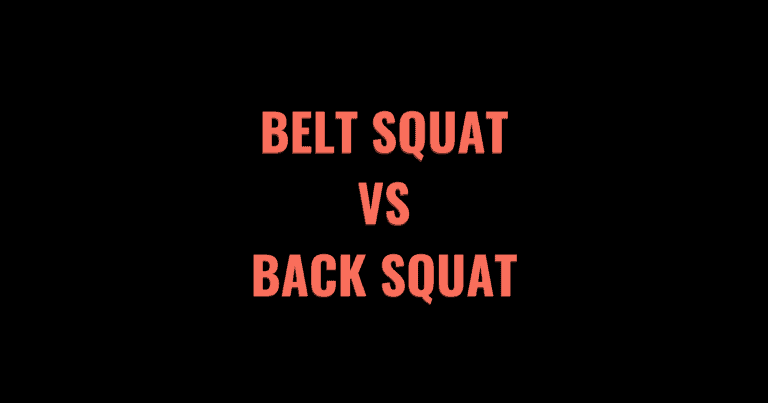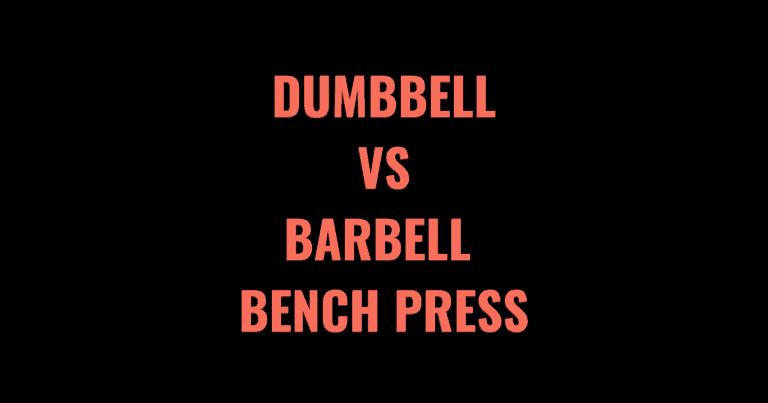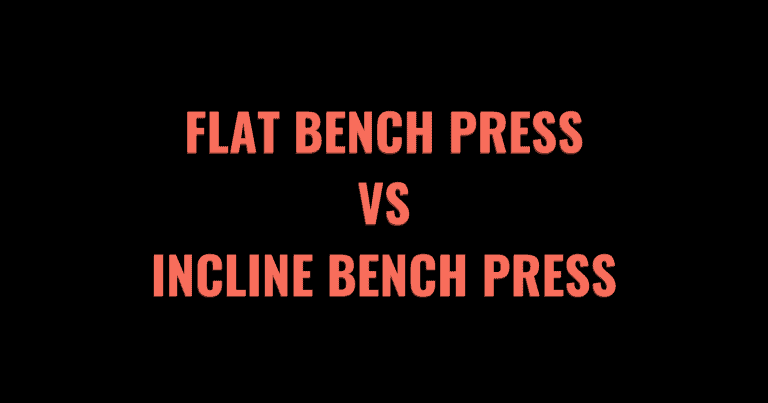Training your upper body boasts numerous benefits for your strength, posture and overall health. Upper body strength exercises are often categorized as either pulling or pushing. Pulling movements include lifts such as barbell rows and pullups. Pushing or pressing exercises include exercises like pushups, bench presses and overhead presses.
The bench press and the overhead press are very popular pushing exercises that help build the size and strength of the upper body. The bench press is a staple exercise for bodybuilders and powerlifters as it is one of the three competition lifts.
The overhead press is a common exercise used by Olympic lifters, Strongman athletes, and Crossfitters. It has been around slightly longer than the bench press and was originally part of the clean and press rather than a standalone exercise.
Both exercises can be part of an effective strength program for your upper body, but they do have several key differences. We’ll compare these two pressing movements, go over the pros and cons of each, and review the key technical differences to help you decide which one to include in your training session.
Table of Contents
- 1 Overhead Press vs. Bench Press
- 2 Overhead Press vs. Bench Press: Pros and Cons
- 3 Overhead Press vs. Bench Press – When to do an exercise
- 4 Overhead Press vs. Bench Press – Muscles Used
- 5 Form Differences
- 6 Helpful Form Cues
- 7 Common Form Mistakes
- 8 Frequently Asked Questions
- 9 What’s the difference between a strict press and a shoulder press?
- 10 Other Exercise Comparison Posts
- 10.1 Split Squat vs Lunge: Differences & Benefits
- 10.2 Romanian Deadlift vs Deadlift: Which is Better?
- 10.3 Leg Press vs. Squat: Differences, Pros, and Cons
- 10.4 Hack Squats vs. Back Squats: Pros and Cons
- 10.5 Tricep Extension vs Skull Crusher: Pros and Cons
- 10.6 Bench Press vs Chest Press: Pros and Cons
- 10.7 Trap Bar Deadlift vs. Barbell Deadlift: Is One Better?
- 10.8 Glute Bridge vs Hip Thrust: Differences & Benefits
- 10.9 Preacher Curl vs Bicep Curl: Differences, Pros, and Cons
- 10.10 Belt Squat vs. Back Squat: Pros & Cons
- 10.11 Dumbbell vs Barbell Bench Press: Differences and Pros & Cons
- 10.12 Flat vs. Incline Bench Press: Which is Better?
Overhead Press vs. Bench Press
What is the main difference between an overhead press and a bench press?
The overhead press and the bench press target similar muscle groups but engage them differently. The overhead press is usually performed standing by pressing a barbell directly above your head. The bench press has the lifter lying down on a bench, pressing the weight from your chest up towards the ceiling. The overhead press is a slightly more shoulder-dominant exercise, while the bench press places more emphasis on the chest muscles.
Overhead Press vs. Bench Press: Pros and Cons
The overhead press and the bench press are both great pushing exercises to include in your program, but depending on your goals, one might be more suitable than the other. Or you might want to use them both on different days or during different phases of your training cycle. Below are some of the pros and cons of the overhead and bench press.
Overhead Press Benefits
Here are some of the advantages of the overhead press.
- Builds more functional strength. Pressing a weight above your head from a standing position more closely resembles real life movements. The standing overhead press requires you to fully support the weight without the added stability of a seat or a bench to lie on. The added demand upon the body helps build strength in multiple muscle groups with one exercise.
- Builds bigger, stronger shoulders. The overhead press is unique in its ability to engage all three of the deltoid muscles. The primary muscles used in an overhead press are the anterior (front) and medial (side) deltoids, but the posterior deltoids also help to stabilize the weight above your head. Upper body strength exercises usually only target one or two of the deltoid muscles, giving the overhead press an advantage for maximizing shoulder strength and size.
- Carries over to a better bench press. The shoulder press strengthens the chest, triceps, and deltoids. By targeting the muscles from a different angle, the shoulder press helps improve your bench press technique. Additionally, as the overhead press also strengthens the upper back, which helps you better control the eccentric phase of the bench press.
- Improves core strength. When performed correctly, the overhead press is great for increasing your functional core strength. Standing upright and maintaining good posture while you press the weight overhead engages multiple core muscles in your front and back torso, improving your posture and core strength for other lifts.
- Works the muscles through a great range of motion. The overhead press requires the bar to move from its starting position across the collarbones to a full extension of the arms overhead. This effort works the muscles of the arms and torso through a large range of motion, targeting the muscles from multiple angles.
- Requires less equipment than the bench press. All you need to perform an overhead press is a barbell, some plates, and ideally a squat rack unless you want to clean the barbell from the floor. There is no need for a bench which may save space or make your set-up quicker and easier if you train in a small or crowded gym.
Overhead Press Disadvantages
Here are some of the drawbacks of the overhead press.
- Requires good mobility in the overhead position. The overhead press requires decent flexibility in the shoulders and chest to perform the lift safely and correctly. If you feel uncomfortable or restricted in the overhead position, you may arch your back or alter your posture to be able to press the weight up. This posture can recruit the incorrect muscle groups, making the exercise ineffective and even posing a risk of injury.
- Often requires a long time to see improvements in strength. The shoulder press may make you feel like you have been lifting the same weight for years without making progres. This slow progress can be demotivating for some lifters, as it requires meticulous technique, consistent practice, and a lot of patience to see your overhead press numbers go up.
Bench Press Benefits
Here are some of the advantages of the bench press.
- One of the best exercises for a bigger chest. The bench press is effective at recruiting most of the fibers in the pectoral muscles of the chest. The bench press is particularly good at engaging the pec major, which makes up the bulk of the chest area. This engagement is why the bench press is an essential movement for bodybuilders on chest day.
- It is an essential exercise for powerlifters. The bench press is one of the main competition lifts in Powerlifting, making it highly specific to this sport.
- You will be able to see more progress. The bench press is designed to be highly customizable to your body and is easy to progressively overload. There is almost no limit to how much weight you can stack onto the barbell, so there is no limit to the strength and hypertrophy gains you can make with a bench press.
- Helps to build stronger triceps. The bench press builds and strengthens the lateral and medial head of the tricep throughout the lift, especially in the lockout phase. Strengthening the triceps in this position not only creates great-looking arms, but will also build strength that translates well to other pressing movements, like pushups and dips.
- Suitable for people with more limited mobility. The bench press requires less range of motion than the overhead press. It also requires the arms to move in a horizontal plane from the body, rather than pushing a weight overhead in a vertical plane. The path of motion is often more comfortable for people with poor overhead mobility, making it a safer and more suitable exercise.
- Develops power for other activities and sports. The bench press is often used to build explosive power in the upper body, including the chest, arms, and shoulders. The power generated in the bench press carries over well to activities such as throwing a ball or doing pushups.
Bench Press Disadvantages:
Here are some of the drawbacks of the bench press.
- Can be unsafe without the correct technique. The bench press is popular among experienced and novice lifters alike. Unfortunately, performing the bench press correctly requires technical skill and knowledge. Doing a bench press with incorrect form is a recipe for injury to the shoulders, chest, or elbows.
- Can impede mobility. The bench press has a shorter range of motion than the overhead press. Without mobility and a stretching regime to complement this lift, it can exacerbate poor movement patterns and create tight pecs and lats, further reducing your mobility.
- Complicated and equipment-heavy set-up. For a basic lift, the bench press requires a fair amount of equipment. You will need a squat rack that is customized to your arm length, a bench, a barbell, and the appropriate amount of weight. Setting up for a bench press can be time-consuming and challenging when equipment or space is limited.
Overhead Press vs. Bench Press – When to do an exercise
When to do an Overhead Press
If you are an Olympic weightlifter, a Crossfitter, or a Strongman athlete, the overhead press is an essential lift to include in your training session. The overhead press is also a great exercise for people wanting to build maximum functional strength, and target their deltoids from multiple angles to build bigger, stronger shoulders.
The overhead press should only be included in your program if you have adequate shoulder and chest mobility to feel safe, secure, and comfortable in a loaded overhead position.
When to do a Bench Press
If you are a powerlifter or an athlete playing a sport that requires explosive power in the chest muscles, the bench press is the exercise for you. The bench press is a great exercise for bodybuilders and weightlifters who want to see continual progression in their lifts and push as much weight as possible to continue increasing the size and strength of their chest and upper body overall.
Lifters should only start bench pressing when they feel confident they have the correct technique to target the correct muscles and avoid discomfort or injury.
Overhead Press vs. Bench Press – Muscles Used
The overhead press and the bench press are both pushing or pressing exercises that target several muscle groups in the upper body. However, the muscles are used slightly differently in an overhead press compared to a bench press. This is due to the difference in starting position (sitting versus standing) and the plane that the weight moves in (vertically in an overhead press and horizontally in a bench press).
Overhead Press Muscles Used
The overhead press primarily targets the muscles in the shoulders, arms, and chest to lift the weight above your head towards the ceiling. It also recruits muscles in the upper body and core to assist the lift and keep the spine stable and protected.
- Primary: Anterior Deltoid, Medial Deltoid, Pectorals, Triceps
- Secondary: Posterior Deltoid, Trapezius (Upper), Rotator Cuff, Erector Spinae, Abdominals
Bench Press Muscles Used
The bench press primarily targets the chest muscles, the pec minor ,and major, to press the bar up. The front deltoids and triceps also contribute to lifting the weight. The bench press also uses other muscles in the upper body to assist and stabilize the lift.
- Primary: Pec Major, Pec Minor, Anterior Deltoid, Triceps
- Secondary: Erector Spinae, Latissimus Dorsi, Rotator Cuff
Form Differences
The primary difference between an overhead press and a bench press is whether you are pressing the weight vertically above your head in a standing position or horizontally from your chest in a lying down position.
Follow the below steps to understand the correct set-up and form for a overhead press and a bench press.
How to do an overhead press with proper form
- Set up your bar with the desired amount of weight and secure the plates using a pin or collar.
- Rack the weight using a squat rack so that the bar is about the same height as your armpit. Some lifters may feel comfortable cleaning the bar from the floor.
- Hold the bar with your arms just wider than shoulder-width and grip it firmly.
- Unrack the bar so that it rests across your collarbone and upper chest and allow your elbows to point forwards rather than flaring out to the sides.
- Take a few steps back so that the rack is not in the way of the bar path.
- Stand tall with a neutral spine and keep your gaze looking forward. Engage your abdominals and your quads so that all your muscles are tensed and provide a stable base.
- Take a breath and as you exhale, push the bar straight above your head without allowing the bar to move too far out in front of you. You will need to tuck your chin to keep your head out of the way of the bar.
- Hold at the top of the lift with your arms fully extended. Your hands, shoulders, and hips should all form a straight line. The weight should be stacked safely over the joints.
- Gently bend at the elbows and lower the bath slowly and with control back down the way it came.
- Allow the bar to come to a complete stop resting across the top of your shoulders.
- Take a breath and repeat for the desired number of repetitions.
For a visual aid, check out this video from Barbell Logic demonstrating the correct set-up and form for an overhead barbell shoulder press.
How to do a bench press with proper form
- Set up your bench underneath a squat rack or a specialized bench rack holding your barbell. Add the desired amount of weight on either side.
- Lie on the bench with a neutral spine. Your eyes should be roughly in line with the vertical arms of the rack.
- Plant your feet firmly on the ground, a little wider than hip-width apart for a broader base and more stability.
- Set your shoulders and pull them back to keep from rounding the shoulders.
- Grasp the bar with a pronated (overhand) grip and your thumb outside your closed fist. Your hands should be just wider than shoulder-width apart.
- Push the barbell up out of the rack and hold the weight in its starting position above your chest.
- Breathe in as you bend the elbows and lower the bar to your chest, aiming for the bar to be in line with your nipples.
- Breathe out as you push through your chest and shoulders to straighten the elbows and press the bar back to its starting position.
- Repeat for the desired number of repetitions. When you complete your final rep, carefully rerack the barbell.
For a visual guide, this helpful video from Layne Norton, PhD, demonstrates the correct setup and technique for performing a bench press.
Helpful Form Cues
Overhead Press Form Cues
- Move through a full range of motion. To get the most out of this challenging but effective exercise, resist the urge to perform partial reps. Make sure the barbell reaches full extension overhead and comes to a complete stop for each repetition to engage the muscles in your arms, shoulders, and chest from multiple angles through a full range of motion.
- Breathe and brace for each repetition. Overhead presses are taxing on the core and stability muscles of the torso. It is helpful to breathe in right before each rep and breathe out afterward. This helps you to brace your core and makes sure you are not gasping for air mid-way through your rep, which can cause your torso to move around and make the exercise less stable.
- Tuck your chin. The last thing you want when pressing heavy weights overhead is to bump your chin with the barbell as it comes up. Not only is this painful, but it can also be dangerous and cause facial, neck, or head injuries. Make sure your head is out of the way of the bar by maintaining a neutral spine and a slight chin tuck.
- Make sure the bar comes to a complete stop after each repetition. The overhead press is an exhausting exercise for the upper body, especially the shoulders. As you start to fatigue, you might be tempted to speed up your reps or allow the barbell to bounce off your shoulders at the bottom of the movement. Generating momentum makes the exercise less effective and potentially unsafe. Make sure the barbell stops completely between each rep to eliminate momentum and get the most out of the exercise.
Bench Press Form Cues
- Push the floor away. Actively drive your feet into the ground and slightly behind you before you unrack the barbell and begin bench pressing. Creating some leg drive helps to maintain a strong, stable torso to protect the spine during the lift.
- Grip the barbell firmly. Keep the hands and wrists active by squeezing the barbell as if you were trying to leave indents where your fingerprints were. This will help the weight feel lighter as it isn’t being dumped into your hands, as well as keeping the wrists more stable and protecting the joints in the arms and hands.
- Keep your shoulders retracted. Before you unrack the barbell, set your shoulders by pinning them back and down away from your ears. Think of holding a pencil between your shoulder blades and letting the shoulder drop into your back pockets. Correctly setting the shoulders ensures the bench press targets the right muscle groups and protects you from injuring your shoulder.
Common Form Mistakes
Overhead Press Form Mistakes
- Not moving through a full range of motion. Many lifters accidentally perform partial reps in an overhead press. Failing to bring the bar back to your collarbone eliminates the ‘sticking point’ at the bottom of the lift. Not fully locking the bar out overhead reduces your ability to improve your lockout strength and fully engage the shoulders and triceps.
- Forgetting about the lower body. Overhead presses are a strict upper body movement, but the legs still have a role to play. Engaging the glutes and quads protects the spine by supporting and stabilizing the trunk as you press the weight overhead. Keeping the quads active also removes the ability to create momentum with the legs.
- Arching the spine. Lifters with reduced mobility in the overhead position will often start to arch their back to push the weight overhead. Arching the back makes the exercise less effective and safe. Reduce the weight or experiment with supported overhead lifts like seated overhead presses to avoid discomfort or injury. Stretching can also help improve your mobility for standing overhead presses.
Bench Press Form Mistakes
- Touching the barbell too high on the chest. The bench press should end with the barbell roughly in line with your nipples. Any higher than that puts the shoulder girdle in an unnatural position and can increase the risk of injury. Make sure your set-up in a bench press allows you to comfortably follow a safe and effective bar path.
- Sacrificing accuracy for speed. The quicker you move in a bench press, the greater the risk of following a suboptimal bar path. Keeping a consistent movement pattern is important for training the right muscle groups and ensuring the exercise is safe.
- Watching the barbell. It is tempting to watch the barbell in a bench press, especially in the second half of the lift as you press the bar away from your chest. Watching the bar puts the neck in a compromised position, which can cause an injury when under heavier weight. Keep your gaze fixed on the ceiling, and get a spotter if you are not confident you will make the lift.
Frequently Asked Questions
Is the overhead press or bench press better for building my shoulders?
The overhead press is the better choice for increasing the size and strength of your shoulders. Ithas the unique ability to target the anterior, medial and posterior deltoids, giving you a great shoulder workout with a single exercise.
Is the military press the same as the overhead press?
The military press is a variation of the overhead press. Overhead presses are done standing, while military presses can be done from a standing or seated position. Military presses typically have the lifter keep their heels together whilst pressing the weight overhead.
What’s the difference between a strict press and a shoulder press?
The short answer is that there is no difference. The strict press and the shoulder press are both alternative names for the overhead press.
Should I do the bench press or the overhead press for building my chest?
The bench press is the better exercise if you are looking to build your chest muscles. Both types of presses engage the pectoral muscles. However, the bench press is slightly more effective at targeting the pec major, which makes up the majority of the muscle mass in the chest.
Other Exercise Comparison Posts
If you enjoyed this post, check out our comparisons of other popular exercises below.
